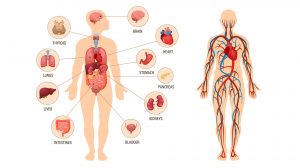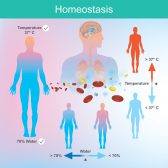”’Young-helmholtz theory of color vision
A theory that there are three perceiving elements in the retina: red, green, and blue. Perception of other colors arises from the combined stimulation of these elements; deficiency or absence of any one of these elements results in inability to discern that color and a misperception of any other color of which it forms a part.
Synonym: helmholtz theory of color vision.
The young-helmholtz theory (discovered in the 18th century by Thomas young and developed by James Clerk Maxwell and Hermann von Helmholtz” in the 19th century) is a trichromatic theory of color vision – a way photoreceptors in the eyes of humans and other primates may enable color vision.
Young’s earliest color work during the seventeen nineties was in physiological optics in which he sought to explain how the eye functioned: young concluded that the lens of an eye changed shape to focus light as necessary and that the retina responded to only three ‘principle colors’ that combined to form all the other colors. In 1801-2, young postulated the existence of three types of photoreceptors (later called cones) in the eye, each of which was particularly sensitive to specific wavelengths of visible light. Later, in the hands of James Clerk Maxwell and Hermann Helmholtz, this view came to be the standard theory of color sensation.
Hermann von Helmholtz agreed with and developed the theory. By 1850 he proposed that three types of cone photoreceptors could be classified. One he called, “short-preferring” (blue), the others were “middle-preferring” (green), and “long-preferring” (red), according to their response to the wavelengths of light reaching the retina. The brain interpreted the strength of the wavelengths detected by the three types of cones as a visible color.
A closely related but more sophisticated theory (involving pulse trains or pulse groups instead of amplitude or “strength”) was demonstrated over a century later, when readings of individual cone cells were finally possible.
Other theories have been advanced to explain the same and other phenomena including; four color theories – for red-green or yellow-blue “color sensation deficiencies” and a two color theory for low luminance color vision and color constancy (The 1970’s Retinex theory of Edwin herbert Land)
All theorists agree that “cones catch color.”
Mnemonic memory device: “Cone??? Starts with “c??? and “c??? Stands for color! You see?







